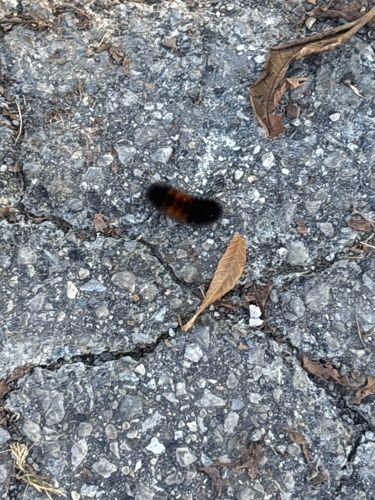Woolly Bear Caterpillar
Scientific Name: Pyrrharctia isabella
Order & Family: Lepidoptera, Erebidae
Size: Larvae (caterpillar) typically range from 1 to 2 inches (2.5 to 5 cm) in length.

Natural Habitat
Widely distributed across North America, found in gardens, fields, woodlands, parks, and disturbed areas. They often overwinter under leaf litter or logs.
Diet & Feeding
Herbivorous. Woolly bear caterpillars feed on a wide variety of low-growing plants, including grasses, dandelions, clover, sunflowers, asters, and plantain.
Behavior Patterns
Woolly bear caterpillars are well-known for their overwintering behavior. They freeze solid during winter and thaw out in the spring to continue feeding and eventually pupate. Their hairy appearance is a defense mechanism against predators. They curl into a tight ball when disturbed. The adult form is the Isabella Tiger Moth, a yellowish-orange moth.
Risks & Benefits
Generally harmless to humans. Their hairs (setae) can sometimes cause mild skin irritation in sensitive individuals if handled, but they are not venomous. They are benign and can be beneficial as a food source for birds and other wildlife. They are also known for folklore about predicting winter severity based on the width of their black bands, though scientifically this is not accurate.
Identified on: 9/28/2025